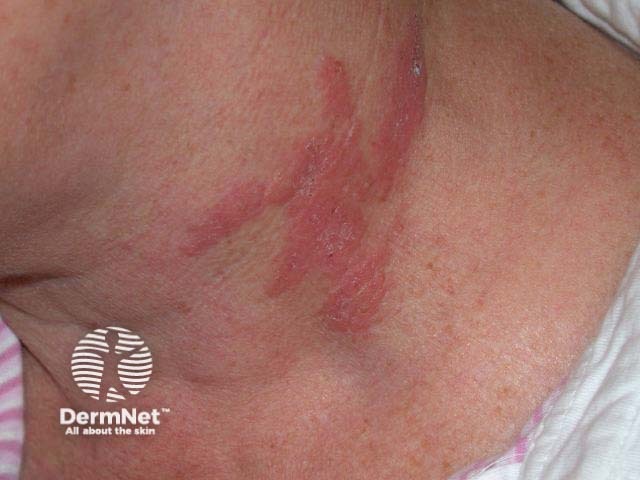Main menu
Common skin conditions

NEWS
Join DermNet PRO
Read more
Quick links
From time to time, we come across linear skin lesions. This can be very helpful diagnostically as there is a limited range of possible diagnoses. A careful history and examination of the morphology of the lesions usually sorts them out.
For each of the nine cases, study the image(s) and then answer the questions. You can click on the image to view a larger version if required.
Each case should take approximately 2 minutes to complete. There is a list of suggested further reading material at the end of the quiz.

Name these linear skin lesions.
Toxicodendron contact dermatitis
What is the cause?
If a patient presents with an acute itchy, swollen or blistered, erythematous rash, it’s likely to be due to contact allergy. The differential diagnosis includes herpes zoster, but this should be confined to a dermatome and is painful. Contact dermatitis may look rather odd –unusual–shaped plaques, asymmetrical distribution, and usually confined to exposed areas. Linear plaques are almost pathognomonic of plant contact allergy, which is frequently a reaction to toxicodendron (the rhus tree, as in this case). However, there are many other plants that may less commonly cause contact allergy in susceptible individuals.
Berloque dermatitis is also asymmetrical, linear and due to plants or plant-derived fragrance. It presents as one or more pigmented streaks. The affected area has been in contact with psoralens and then exposed to sunlight. Examples include a rash on the wrist due to squeezing juice from a lime, or on the legs from brushing past umbelliferae weeds found in long grass.